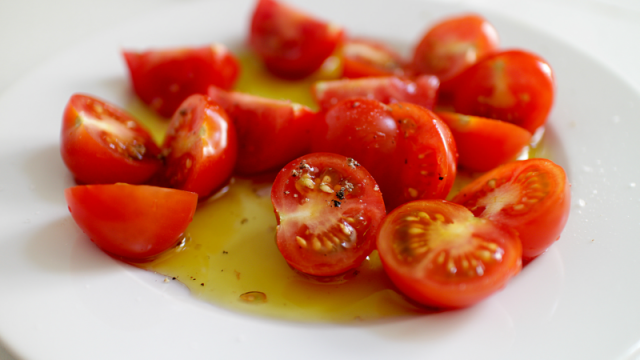When it comes to confusing labels and price points, I find olive oil to be second only to wine. Once you get a handle on the whole virginity thing, there is the matter of region to contend with, and it can be hard to know which one you “should” cook with.
Photo by Christian Kadluba.
In its simplest form, “olive oil” is simply oil extracted from the fruit of an olive tree and can be either “refined” or “unrefined.” According to The Kitchn, while “Refined” it does remove flaws from the oil, it can also remove colour and flavour. “Unrefined” olive oil is further broken down into two categories – “virgin” and “extra virgin.” Typically though, when shopping for olive oil, you’re most likely to see these three:
- “Regular” olive oil: The bottle will just say “olive oil” or “pure olive oil,” in an attempt to rise above its station. This is usually a blend of virgin and refined olive oil, which means at least some of it has been heat- and/or chemically treated. It has a pretty neutral flavour, and can used for all-purpose cooking.
- Extra virgin olive oil: “EVOO,” if you’re a food blogger from the aughts. This is the good, unrefined stuff that has the most colour, flavour and antioxidants. You could use this for cooking – just know that it has a pretty low smoke-point and that high-heat cooking will obliterate the oil’s flavour, so save the fancy stuff for finishing and (maybe) some light sauteing.
- “Light” oil: This oil is not lacking in calories, but in flavour and colour. It is refined, and has a higher smoke point of 240 degrees Celsius, so feel free to use it for frying.
Unfortunately, many olive oils are bottles of deceit. Which makes sense, because luxury makes liars of us all. (I always feel like I am being actively conned in those fancy olive oil stores.) Luckily, we have a few ways to ensure you’re not being duped when you buy the pricey stuff, including checking for a seal of approval and looking for a cultivar.
Once you have a bottle of that good oil, save it for tasting and leave the frying for the lesser bottles. The flavour of extra virgin olive oil varies from region to region, and can be grassy, peppery, or sweet, and I’d hate for your mouth to miss that journey.

Comments